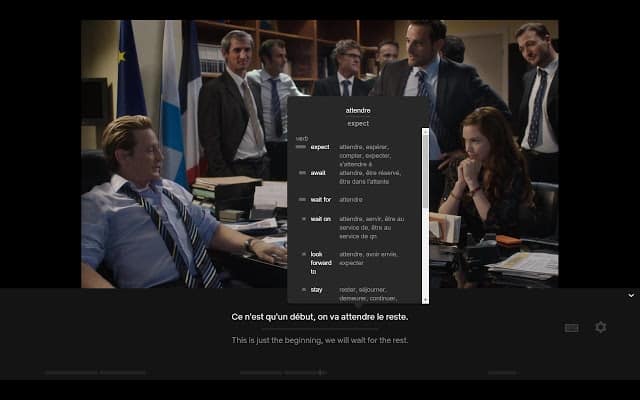Immersion is the best way to learn a new language. That’s why people who live abroad become fluent faster than those who are learning a new language while living in their home country. It makes sense: if you’re using the language you’re studying 24/7, you’ll naturally become good at it. But most people can’t go overseas just to learn a new language. Fortunately, the internet makes it extremely easy to find content in foreign languages. From Netflix originals to YouTube videos, there’s plenty to watch. You can even learn a new language while binge-watching Friends for the 20th time.

If you’re watching a show or video in your mother tongue, turn on subtitles and set them to the language you’re learning. Since you can understand the dialogue naturally, you’ll start to connect some words and expressions by reading the subtitles. For example, if the word ‘obrigado’ pops up every time a character says ‘thank you’, you’ll know how to thank someone in Portuguese. Although this method won’t help you with listening or speaking, it’s great to expand your vocabulary.
No, we’re not taking a stance about which version is better. But when you’re learning, it’s always better to watch content in its native language. For instance, if you want to learn Japanese, it makes more sense to watch subbed Anime over an English dubbed version. The reason is simple – if you watch it in Japanese with English subtitles, you’ll naturally learn expressions and vocabulary. On the other hand, if you go with the dubbed version, you won’t learn anything.
This is also true for the Netflix originals you have waiting on your watchlist. For example, it’s better to watch La Casa de Papel (Money Heist) in Spanish with English subtitles. This method is more efficient than watching English shows with foreign subtitles, as you learn how to correctly speak the language, hear local accents, and improve your pronunciation. Other foreign Netflix shows you might be interested in are Dark (German), Kingdom (Korean), Selection Day (Indian), Call My Agent! (French), and 3% (Brazilian).

Most streaming services are geo-restricted and offer unique libraries in different countries. However, you might want to watch some Mexican telenovelas when learning Spanish. For you to have access to blocked content, you’ll have to use a VPN. This software changes your IP to the country you want and bypasses streaming services’ firewalls, tricking the platform into thinking that you’re accessing it from your chosen country. Just bear in mind that you might not find subtitles in your native language. But if you already know the basics, this is a good way to develop proficiency.
YouTube is everywhere, and you’ll certainly find someone publishing content that you enjoy in the language you’re learning. Since most YouTubers are just regular people with a camera, it’s the perfect place to listen to natives speaking about everyday things. Consequently, you’ll not only improve your pronunciation but also learn colloquial expressions and modern vocabulary. YouTube even has the option to translate videos automatically. Unfortunately, it doesn’t work for all languages and there are occasional translation mistakes, but it’s a decent learning method for those who spend a lot of time on the platform.
Streaming shows to learn a new language is so common that there’s a browser extension for Netflix to help you out. The extension is called ‘Language Learning with Netflix’, and shows subtitles in two languages (foreign and native), lets you listen to subtitles one line at a time, and comes with a pop-up dictionary. Language Learning with Netflix even suggests the most important words for you to learn. It’s possible to further enhance your learning experience by getting the browser extension’s pro version. This unlocks additional subtitle translation options as well as the ability to save words and phrases that are highlighted whenever they appear in the subtitles.

Although learning a new language just by streaming your favorite shows might not be enough to make you a native speaker, it’s an excellent (and enjoyable) way to expand your vocabulary and improve your proficiency. But bear in mind that you need to know the basics first. For example, trying to improve in a language that has little to no resemblance to your native one through streaming alone is extremely challenging. While you will start to recognize some specific expressions and vocabulary, you won’t know how to come up with your own phrases or learn to speak fluently. However, by combining streaming with a language learning app or live tutoring, you’ll have a more immersive experience and learn faster.
Share your thoughts, ask questions, and connect with other users. Your feedback helps our community make better decisions.
©2012-2025 Best Reviews, a clovio brand –
All rights
reserved